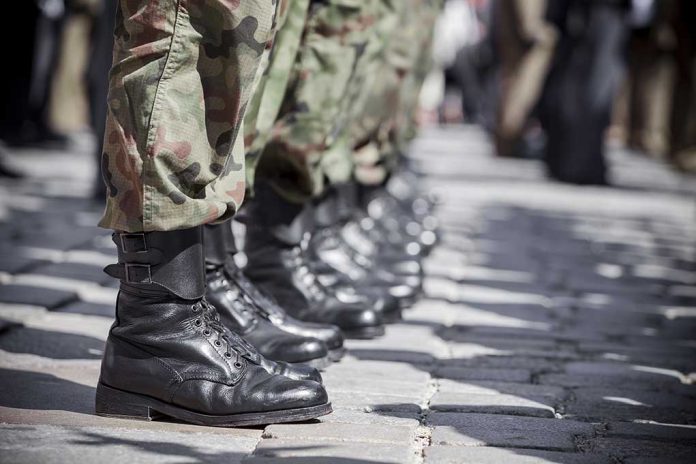
U.S. Marines have arrived at Guantanamo Bay to support a controversial plan to house thousands of illegal immigrants, marking a significant shift in immigration policy enforcement.
Key Takeaways
- Marines and soldiers are being deployed to Guantanamo Bay to secure a 30,000-person migrant facility.
- The operation is part of President Trump’s strategy to enhance border security and manage illegal immigration.
- Guantanamo Bay, formerly used to detain terrorists, is being repurposed for holding undocumented migrants.
- Over 150 service members are currently involved, with plans to increase troop presence.
- The initiative faces challenges, including diplomatic tensions with some countries refusing to accept deported citizens.
Military Deployment to Guantanamo Bay
In a significant move to address illegal immigration, U.S. Marines have been deployed to Guantanamo Bay Naval Base in Cuba. This operation, led by the Department of Homeland Security (DHS), aims to expand the Migrant Operations Center at the base to accommodate up to 30,000 migrants. The deployment includes Marines from the 1st Battalion, 6th Marine Regiment, 2d Marine Division, along with elements from U.S. Southern Command and U.S. Army South.
The White House has framed this move as part of President Trump’s mission to protect Americans and secure the nation. However, the repurposing of Guantanamo Bay, previously known for detaining terrorism suspects, for housing illegal immigrants has sparked controversy and debate.
Challenges and Diplomatic Tensions
The administration faces significant challenges in implementing this plan. Some countries are refusing to accept their citizens back, creating diplomatic tensions. A public disagreement between President Trump and Colombia’s President Gustavo Petro over the return of Colombian migrants highlights these difficulties.
DHS Secretary Kristi Noem has not ruled out the possibility of housing migrant women and children at Guantanamo, emphasizing the use of existing facilities to house migrants, including children. This stance has raised concerns among human rights advocates and immigration reform supporters.
“You know, if you look at what we are doing today of targeting the worst of the worst, we’ve been very clear on that. The priority of this president is to go after criminal aliens that are making our streets more dangerous” – Kristi Noem
Expanded Border Security Measures
Beyond the Guantanamo operation, President Trump has deployed an additional 1,500 soldiers and Marines to the southern border, with plans to send a total of 10,000 troops to assist in border operations. This includes roughly 500 soldiers from the 10th Mountain Division mobilizing to Texas to support operations on the southern border.
The administration’s plan aims to address what it describes as a border invasion and dismantle criminal cartels. Secretary of Defense Pete Hegseth has termed Guantanamo as a “transit hub” for migrants who cannot be immediately returned to their home countries. This approach has sparked discussions about the need for increased DHS funding to build additional detention centers and improve the legal immigration system.
International Cooperation and Future Implications
President Trump has announced that Mexico would send 10,000 soldiers to the border to stop the flow of fentanyl and migrants into the U.S., indicating a collaborative approach to border security. Additionally, the U.S. Coast Guard has begun flying detained migrants to deportation sites in Texas and California, further intensifying the administration’s efforts to manage illegal immigration.
As this operation unfolds, it raises questions about the long-term implications for U.S. immigration policy, international relations, and the role of military facilities in civilian law enforcement. The repurposing of Guantanamo Bay and the increased military presence at the border mark a significant shift in how the United States approaches immigration enforcement and border security.
Sources:
- Marines arrive at Guantanamo Bay as Trump’s migrant deportation plan moves ahead at warp speed
- Troops arrive at Guantanamo Bay to prepare migrant detention center
- Marines, soldiers arrive at Guantanamo Bay for migrant ‘holding operations’







